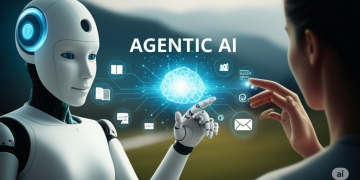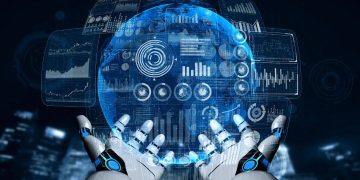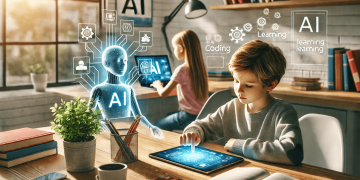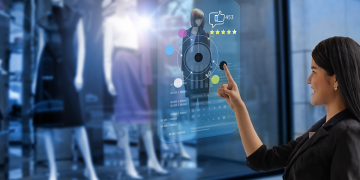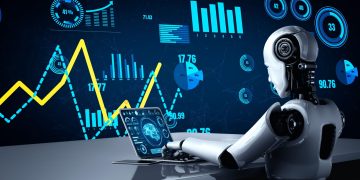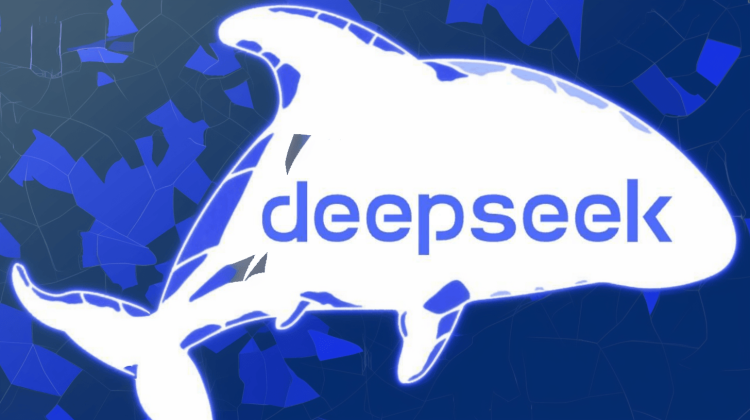Artificial intelligence continues to reshape industries at an unprecedented pace, and 2025 promises to be another landmark year for AI-driven innovation. From powerful enterprise platforms to specialized assistants and creative tools, the market offers a growing array of AI solutions that cater to diverse needs across business, research, and content creation. Navigating this complex landscape requires insight into which technologies truly lead the pack.
This article provides a detailed overview of the AI tools and platforms that experts consider the most impactful and worthy of attention in 2025. We highlight their unique strengths, practical applications, and how they are helping organizations leverage AI to unlock new capabilities, enhance productivity, and maintain competitive advantage.
1. OpenAI ChatGPT Enterprise: Conversational AI Meets Business-Grade Security and Customization
OpenAI’s ChatGPT Enterprise is the flagship AI platform for organizations seeking to integrate conversational AI into their workflows securely and at scale. Building upon the success of consumer ChatGPT, this enterprise-grade offering enhances data privacy, compliance, and customization capabilities. Users can deploy custom GPTs tailored to specific business contexts, analyze usage with advanced analytics, and seamlessly integrate the platform into existing IT infrastructure.
Key Features:
- Data encryption and compliance with industry standards
- Fine-tuning and customization for domain-specific knowledge
- API access for embedding AI-powered chatbots and virtual assistants
- Team collaboration tools for internal and customer-facing applications
Use Cases: Automating customer support, drafting internal documents, accelerating coding and development tasks, and enhancing employee productivity.
Expert Perspective: According to industry leaders, ChatGPT Enterprise combines unmatched natural language understanding with robust enterprise features, making it the most versatile platform for organizations prioritizing both innovation and security.
2. Google Vertex AI: A Unified Platform for End-to-End Machine Learning
Google’s Vertex AI provides a comprehensive cloud-based environment that supports the entire machine learning lifecycle—from data preparation and model training to deployment and monitoring. Its strong suit lies in making sophisticated ML and AI accessible through AutoML capabilities, pre-trained models for vision and language, and seamless integration with Google Cloud services.
Key Features:
- AutoML for non-experts to build high-quality models
- Pre-built APIs for vision, language, translation, and speech
- Scalable infrastructure optimized for large-scale AI workloads
- MLOps tools for continuous model management and retraining
Use Cases: Retail demand forecasting, fraud detection, predictive maintenance in manufacturing, and automated document processing.
Expert Perspective: Experts emphasize Vertex AI’s ability to lower barriers for organizations by streamlining complex workflows while offering enterprise-grade scalability and security.
3. Microsoft Azure AI: Powering Productivity and Custom AI Solutions
Microsoft’s Azure AI ecosystem now includes Copilot functionalities embedded within Microsoft 365 applications, such as Word, Excel, and Teams, transforming how users interact with documents and data. The platform also provides AI Studio for custom model development, enabling enterprises to build, fine-tune, and deploy AI models securely.
Key Features:
- Seamless integration with Microsoft Office suite and Dynamics 365
- Cognitive Services APIs for vision, speech, language, and decision-making
- Azure Machine Learning for scalable model training and deployment
- Compliance with global security and privacy standards
Use Cases: Enhancing employee productivity through AI-driven insights, creating intelligent virtual assistants, and automating complex workflows.
Expert Perspective: Microsoft’s strategy to embed AI across its productivity tools while supporting deep customization gives enterprises a powerful dual advantage in efficiency and innovation.
4. Claude 3 by Anthropic: Safe, Long-Context AI Reasoning for Complex Tasks
Claude 3 distinguishes itself with an extended context window of over 100,000 tokens, allowing it to process and generate coherent responses across lengthy documents or multi-turn conversations. Its design emphasizes safety and ethical AI use, making it a preferred choice in sectors like law, healthcare, and research where accuracy and responsibility are paramount.
Key Features:
- Exceptionally long input processing capabilities
- Ethical guardrails to minimize biased or harmful outputs
- Support for complex reasoning and nuanced understanding
- Cloud and on-premise deployment options
Use Cases: Contract analysis, medical report summarization, academic research assistance, and policy drafting.
Expert Perspective: Claude 3’s cautious yet powerful reasoning abilities position it as a leading AI tool for regulated industries requiring transparent and trustworthy AI.
5. Perplexity AI: Redefining Research with Verified Generative Search
Perplexity AI combines generative AI’s conversational abilities with traditional search engine precision by providing responses supported with source citations. This hybrid approach is invaluable in journalism, academia, and legal fields where source reliability is critical.
Key Features:
- Integration of verified sources alongside AI-generated answers
- Conversational interface for intuitive querying
- Real-time fact-checking support
- Cross-domain applicability from scientific research to market intelligence
Use Cases: In-depth news investigation, legal case preparation, scientific literature review, and competitive business analysis.
Expert Perspective: Experts hail Perplexity AI for bridging the gap between creative AI and factual reliability, enhancing confidence in AI-assisted research.
6. IBM watsonx: Enterprise AI with Focus on Governance and Compliance
IBM’s watsonx platform is designed for organizations requiring strong governance, security, and explainability in their AI deployments. It offers tools for building foundation models tailored to sensitive industries like healthcare, finance, and telecommunications, with robust data privacy and audit features.
Key Features:
- Customizable foundation models with data lineage tracking
- AI governance tools ensuring compliance with regulatory standards
- Support for confidential computing environments
- Integration with enterprise data lakes and workflows
Use Cases: Risk management, fraud detection, clinical decision support, and regulatory reporting.
Expert Perspective: watsonx is the go-to platform for enterprises prioritizing transparency, control, and responsible AI use in highly regulated contexts.

7. Midjourney v6: AI-Driven Visual Creativity with Professional-Grade Output
Midjourney continues to set the standard for AI-generated imagery with its latest iteration offering dramatic improvements in photorealism, detail, and style versatility. It empowers artists, marketers, and creative teams to generate high-quality visuals rapidly and with precision control.
Key Features:
- High-resolution, photorealistic image generation
- Extensive style customization options
- User-friendly interface for both beginners and professionals
- Integration capabilities with digital asset management systems
Use Cases: Advertising campaigns, concept art for games and films, social media content creation, and branding.
Expert Perspective: Midjourney’s advancements fuel creative industries by drastically reducing time and cost for high-quality visual content production.
8. Jasper AI: Scalable AI Copywriting for Marketing and Communications
Jasper AI specializes in natural language generation tailored for marketing teams, enabling rapid creation of blog posts, ads, emails, and product descriptions that align with brand voice and SEO best practices.
Key Features:
- Templates for various marketing content types
- Multilingual support for global reach
- Tone and style customization to match brand identity
- Integration with SEO tools for optimized content creation
Use Cases: Content marketing, email campaigns, social media posts, and product launches.
Expert Perspective: Marketing professionals widely endorse Jasper AI for its ability to balance creativity with scale, freeing teams to focus on strategy.
9. Notion AI: Embedded Intelligence in the Ultimate Productivity Workspace
Notion AI enhances the popular all-in-one workspace with smart features that automate note-taking, content summarization, and task management, making daily workflows more efficient and collaborative.
Key Features:
- AI-assisted content drafting and brainstorming
- Automatic summarization of long documents
- Task and project management enhancements
- Seamless integration within Notion’s ecosystem
Use Cases: Remote team collaboration, knowledge management, research documentation, and project planning.
Expert Perspective: Notion AI is praised for its unobtrusive assistance, turning the workspace into an intelligent partner rather than just a tool.
10. ElevenLabs: Natural and Expressive AI Voice Generation
ElevenLabs stands out as a leader in AI voice synthesis, offering lifelike, emotive voice generation that supports a wide range of languages and dialects. Its technology finds applications in media production, education, and accessibility.
Key Features:
- Realistic text-to-speech with emotional nuance
- Multilingual and accent customization
- Easy integration with content production pipelines
- Support for audiobooks, podcasts, and virtual assistants
Use Cases: Voiceovers for video content, educational narration, accessible content creation, and digital avatars.
Expert Perspective: ElevenLabs is revolutionizing how voice is produced and consumed, enabling personalized audio experiences at scale.
Conclusion: Choosing the Right AI Tools in 2025
The AI landscape in 2025 is rich with platforms that blend cutting-edge research with practical usability. Experts highlight that the best tools not only push technological boundaries but also align with business realities — offering security, scalability, and domain-specific strengths.
Whether you’re an enterprise aiming to transform operations, a creative professional seeking inspiration, or a researcher demanding accuracy, these AI tools represent the forefront of innovation. Staying informed about their evolving capabilities will be key to harnessing AI’s full potential in the years ahead.







